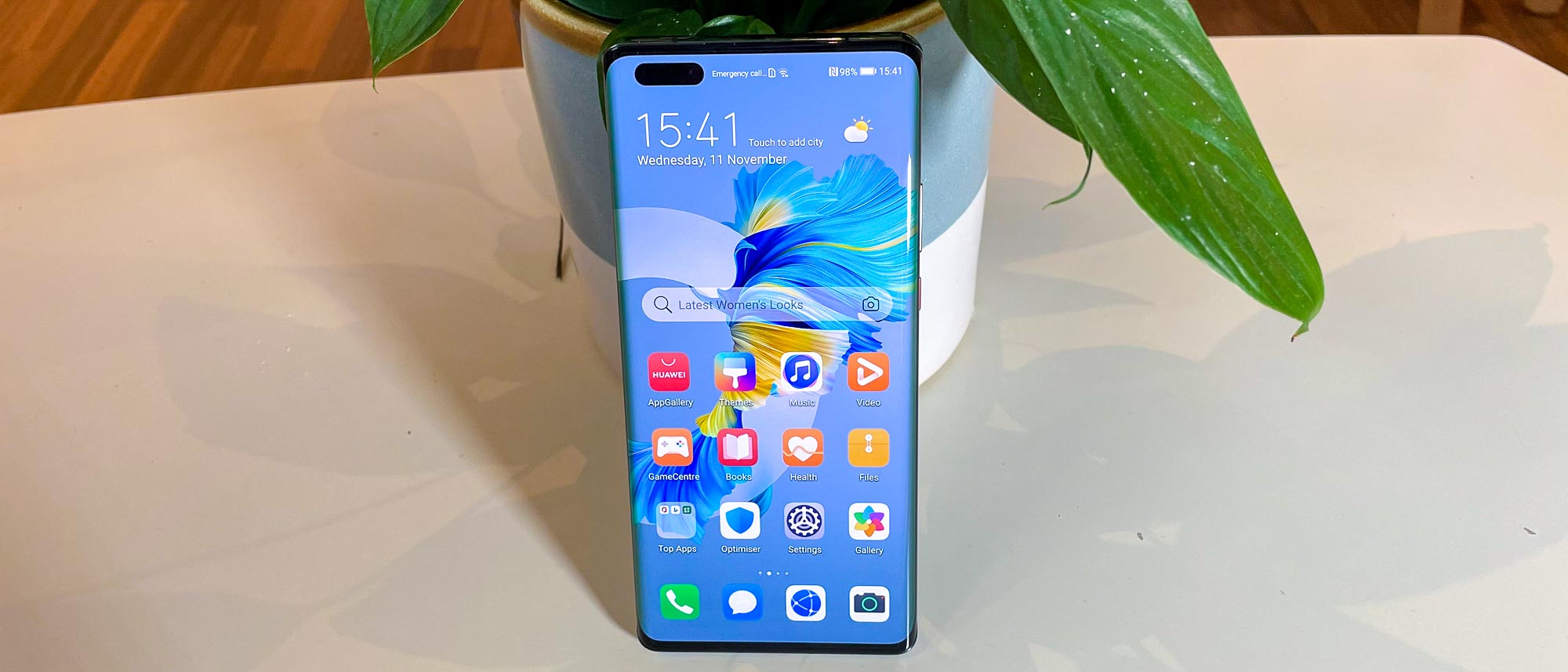Tom's Guide Verdict
The Huawei Mate 40 Pro carries the same strengths and weaknesses as the company's other recent phones. The hardware is excellent for the most part, and class-leading in some places. But the software issues mean it's not suitable for the average user, who should turn to flagships from Samsung or OnePlus instead.
Pros
- +
Excellent photography
- +
Powerful Kirin 9000 chipset
- +
Impressive audio and visuals
Cons
- -
No Google apps, others require work to install
- -
No U.S. availability
Why you can trust Tom's Guide
Price: £1,099
Display: 6.76 inches FHD+ (2772 x 1344) with 90Hz refresh rate
Colors: Black, Mystic Silver
CPU: HiSilicon Kirin 9000
RAM: 8GB
Storage: 256GB
Rear cameras: 50MP main (f1.9), 20MP cine/ultra-wide (f1.8), 12MP telephoto, laser depth sensor
Zoom: 5x optical, up to 50x digital
Front cameras: 13MP wide (f/2.4) & 3D Depth Sensing Camera
5G: sub6GHz
Operating system: Android 11 with EMUI 11
Battery: 4,400 mAh
Max. charging speed: 66W wired, 50W wireless
Size: 6.41 x 2.97 x 0.35 inches (162.9 x 75.5 x 9.1 mm)
Weight: 7.47 ounces (212g)
The Huawei Mate 40 Pro arrives a little more than a year after the Chinese telecoms giant was rudely booted out of the U.S. Government's good graces, and had to rebuild its software ecosystem back up from ground level with the benefit of Android. The Mate 40 Pro is Huawei’s best attempt at a Google-less smartphone so far, but is it enough to genuinely tempt users away from Samsung, OnePlus, or even Apple?
If you're obsessed with having the best hardware in your handset, possibly. Huawei's delivered another polished experience with its most powerful silicon and most competitive cameras yet. However like the P40 Pro before it, having to accept this phone’s software limitations is a pain.
- The best phones you can buy today
- See how the Mate 40 measures up against the best Android phones
Things aren’t as bad as they used to be thanks to some alternatives and workarounds Huawei now has in place, plus the benefits of Multi-screen collaboration with other Huawei devices might tempt productivity-hungry users. For the average user though, our Huawei Mate 40 Pro review finds that this isn't an automatic choice for your next phone.
Huawei Mate 40 Pro review: Price and release date
Once again, U.S. users won't find the Mate 40 Pro at their local phone store, with the only option being online retailers who import devices from overseas. Be aware though that this can cost a lot more than you might expect, and you'll be wise to check which 4G and 5G bands the specific model supports to see whether the phone works with your chosen carrier.
In the U.K., the Mate 40 Pro's a lot easier to find. It's available in a single 8GB RAM/256GB storage spec in a choice of Black or Mystic Silver for £1099.99 — the same as you'll pay for an iPhone 12 Pro Max with 128GB storage. It’s also in the same ballpark as the £949 Samsung Galaxy Note 20 and the £1,179 Galaxy Note 20 Ultra.
Huawei Mate 40 Pro review: Design
From the front, the Huawei Mate 40 Pro better resembles its smaller P40 Pro sibling than its Mate 30 Pro predecessor, because of its pill-shaped front camera cutout in the top left corner.
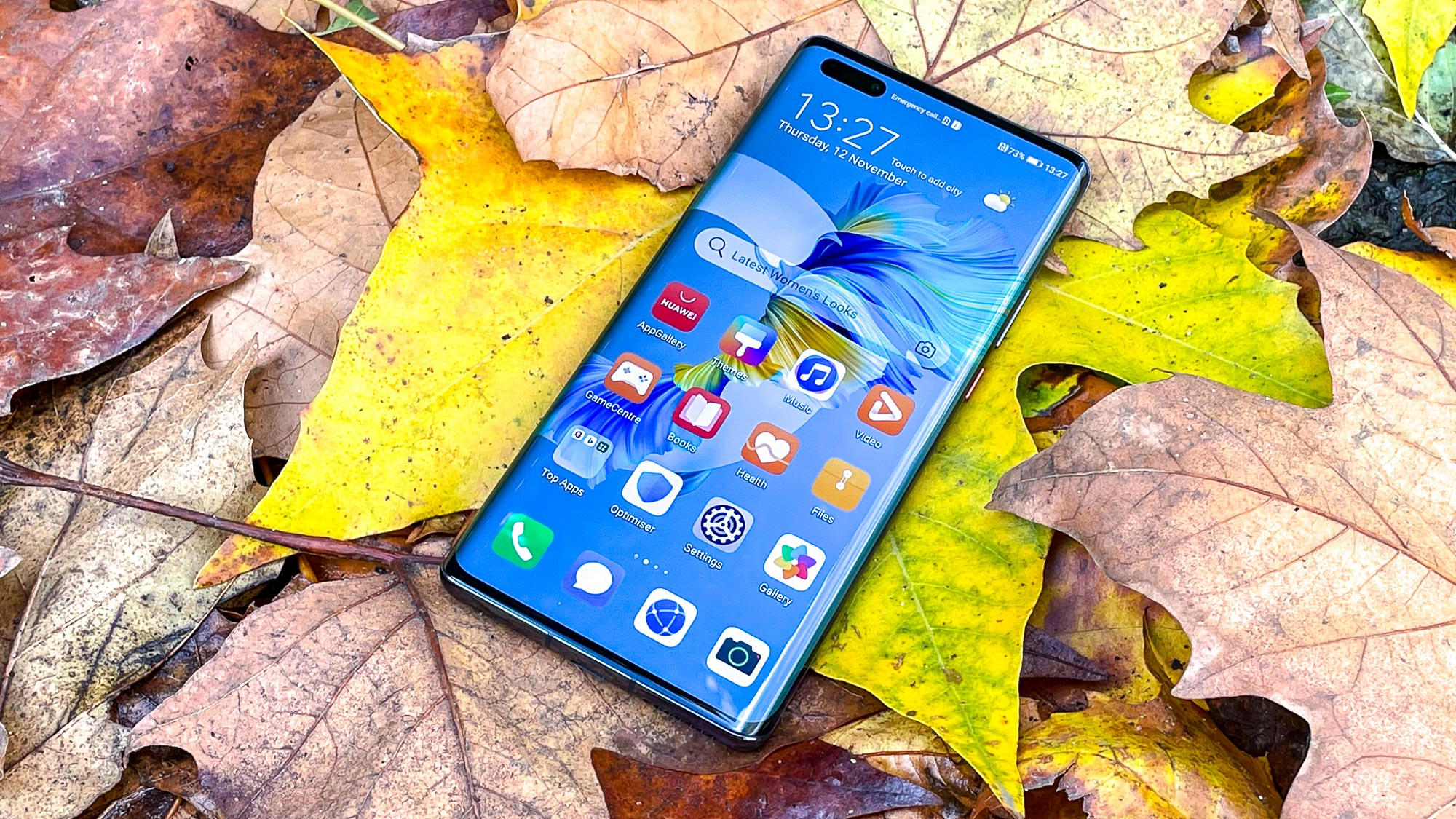
That approach is much more attractive than the Mate 30's central notch, but it still takes up a lot more room than the common single punch-hole camera you find on most Android phones.
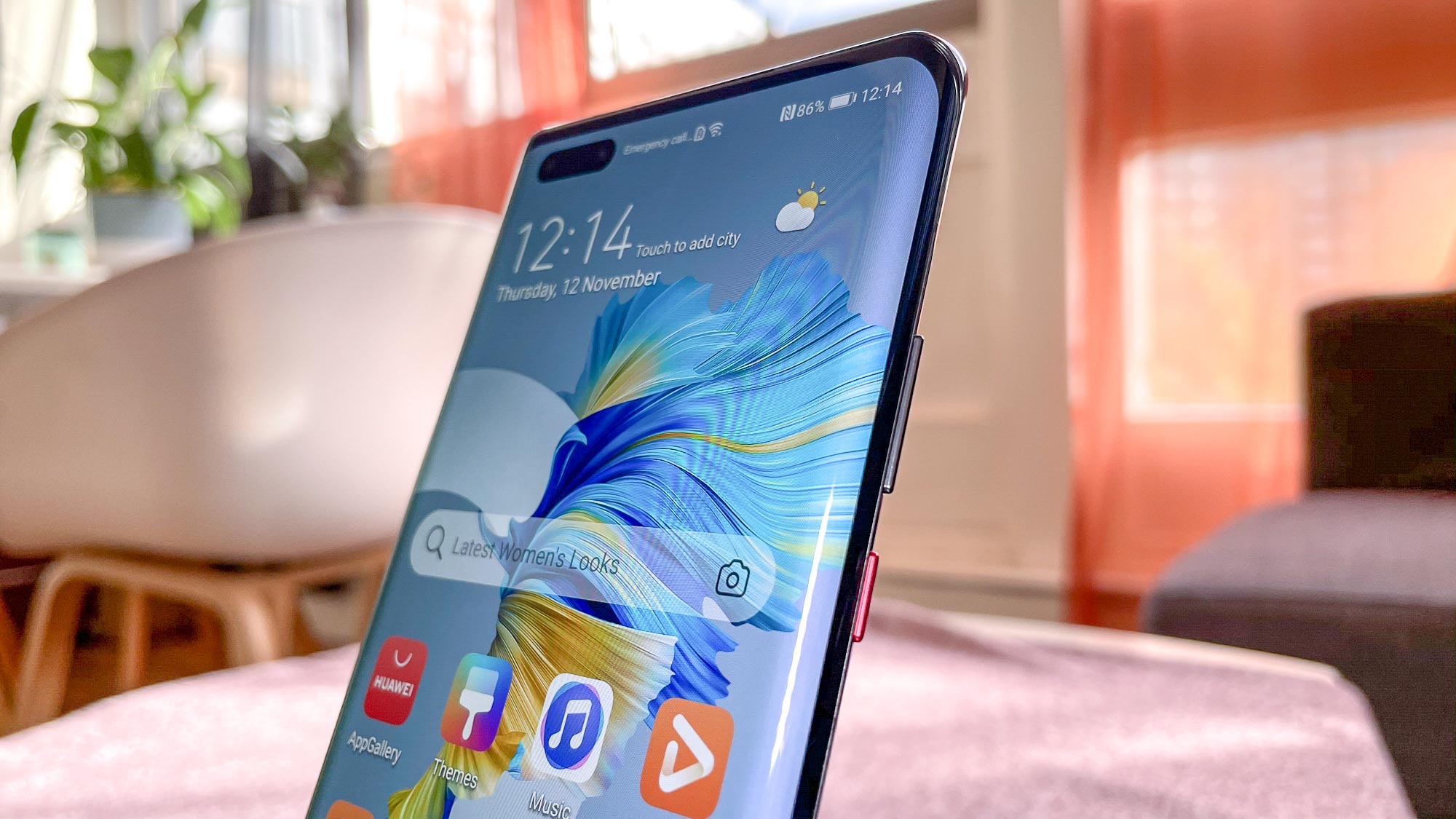
Around the sides, you'll see Huawei has kept the dramatic 88-degree curves on the display, which meet neatly with the more subtle rear curvature to make a phone that's very comfortable to hold in your palm. However the phone seems noticeably thicker than many others I've tried this year; the 7.5-ounce weight adds to that bigger feel, too.
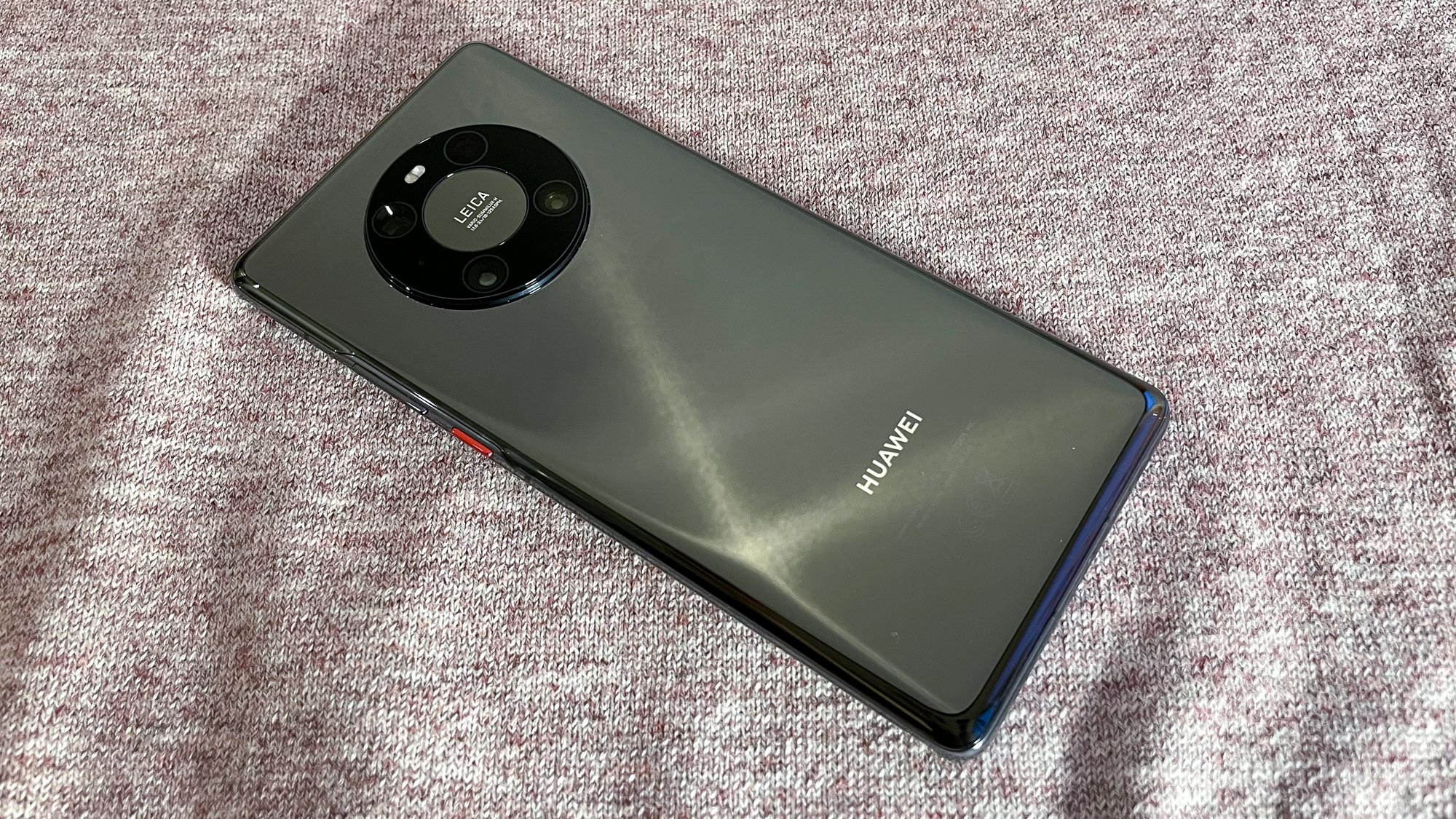
Turning the phone over reveals Huawei’s new "Space Ring" camera array, with the four sensors arranged in the corners of an imagined square within the circular donut. It's a neat homage to the circle of cameras on the Mate 30, but I think I prefer the older style that doesn't leave a random gap in the middle. That said, Huawei has put the hole in the donut to good use by placing the Leica branding there, reminding us all of the partnership between Huawei and the German camera and lens maker.
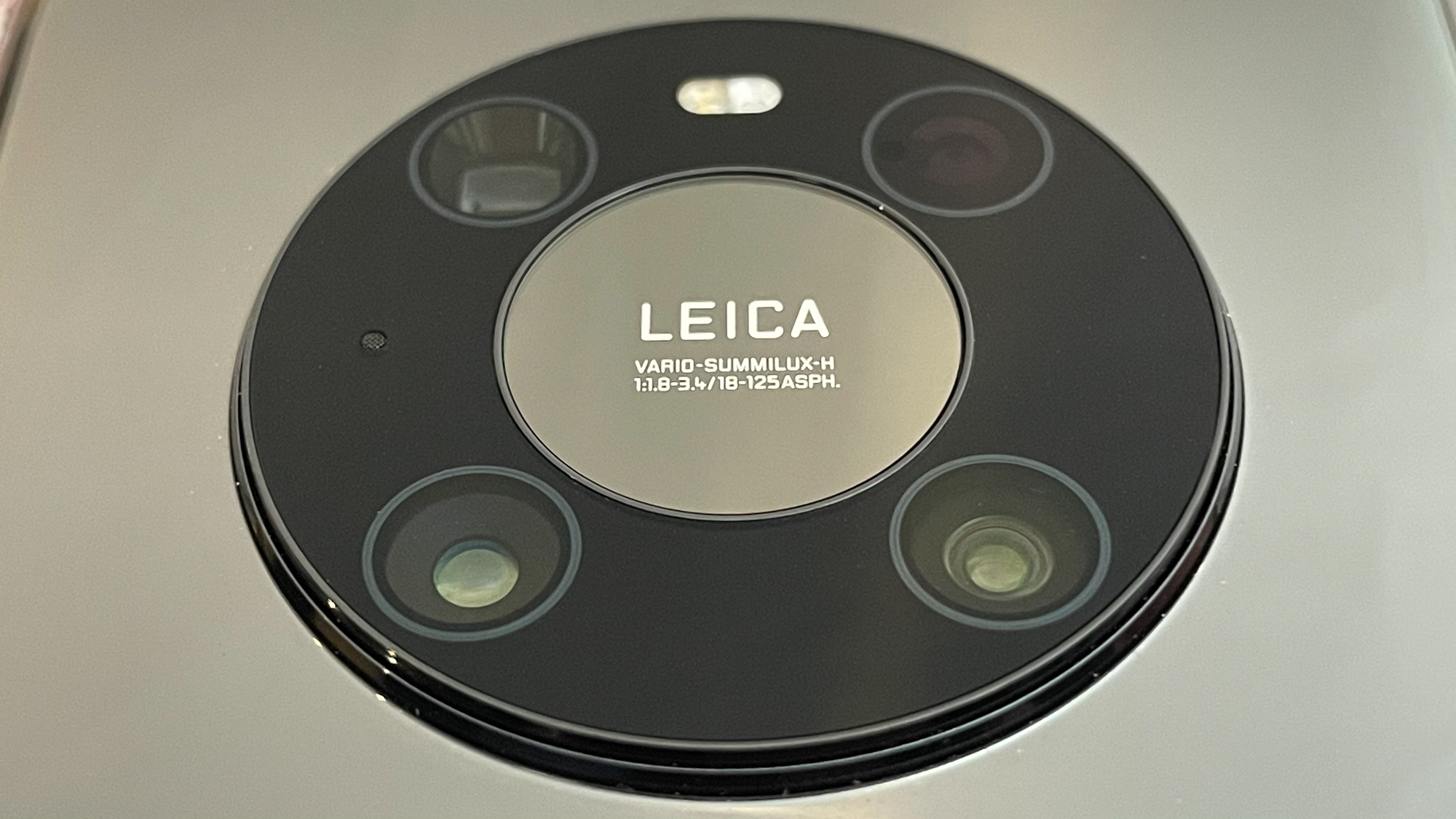
With the Mate 40 Pro, Huawei has once again produced a trademark uncomplicated design, which looks particularly classy in this black color option. The Mystic Silver with its pearlescent quality would make for a more eye-catching color if you'd prefer. Both colors feature a small splash of red on the power button, another Mate series trademark. Next to it you'll see that there's a volume rocker, which is interesting since Huawei got rid of that feature on the Mate 30 last year, replacing it with on-screen volume control gestures. Those return, accessed by double tapping either edge, but you can also control it like a normal phone if that's your preference.
Huawei Mate 40 Pro review: Display and audio
At 6.76 inches, the Mate 40 Pro has a display that’s on the larger side, though it’s still smaller than the 6.78-inch OnePlus 8 Pro, or the 6.9-inch Samsung Galaxy S20 Ultra and Galaxy Note 20 Ultra.
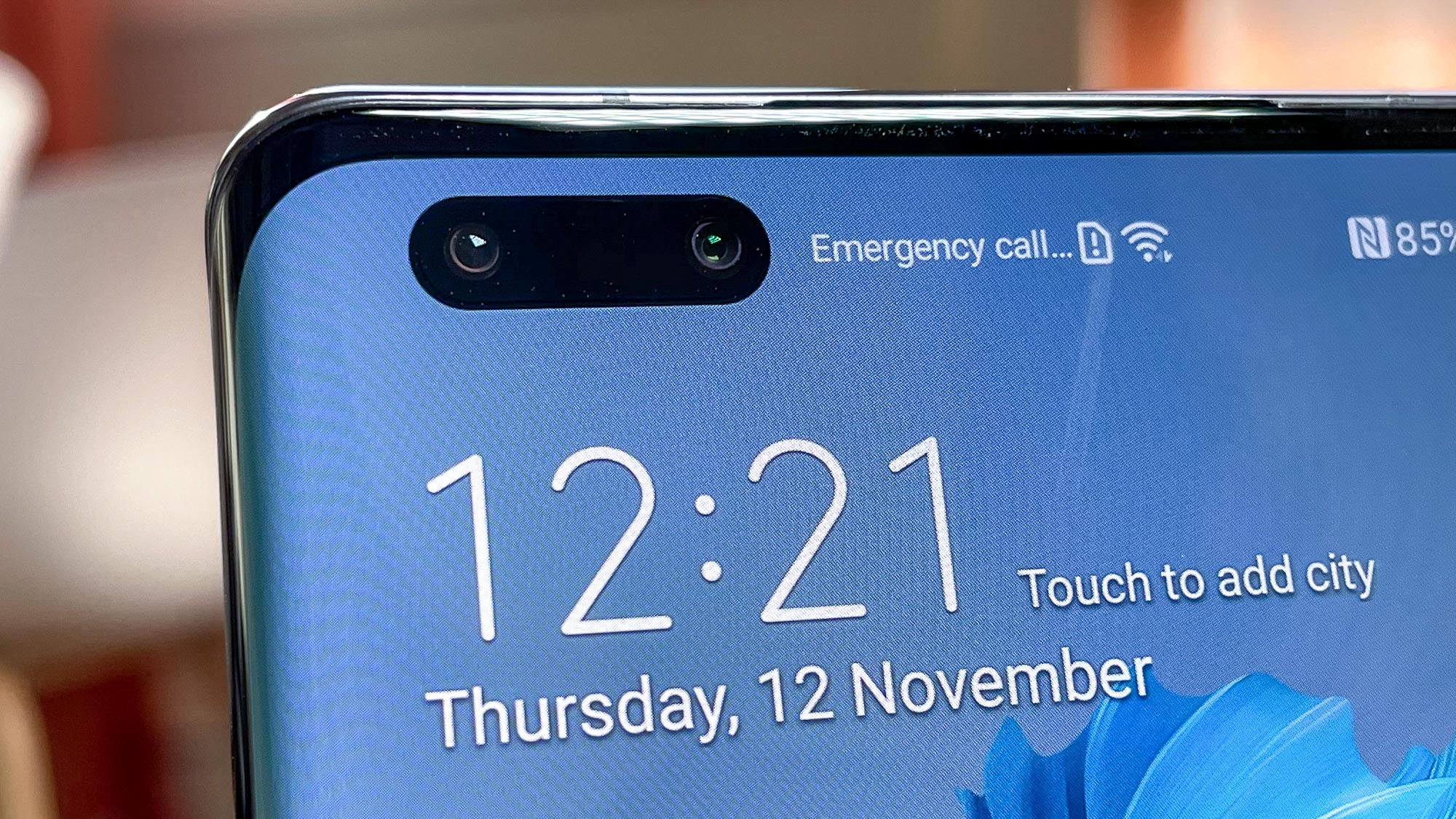
Those three phones also beat the Mate 40 in terms of resolution and refresh rate. Huawei’s phone offers an FHD panel with a maximum refresh rate of 90Hz. All the rest offer QHD and 120Hz but pay for it in shorter battery life, something Huawei claims it has no problem with.
As a test, I watched the trailer for the second season of gritty anthropomorphic animal anime Beastars. The FHD resolution didn't affect my enjoyment of the plot teasers, displaying the textures of the different characters' fur and the strong flat colors the show uses to reference its manga origins vividly.
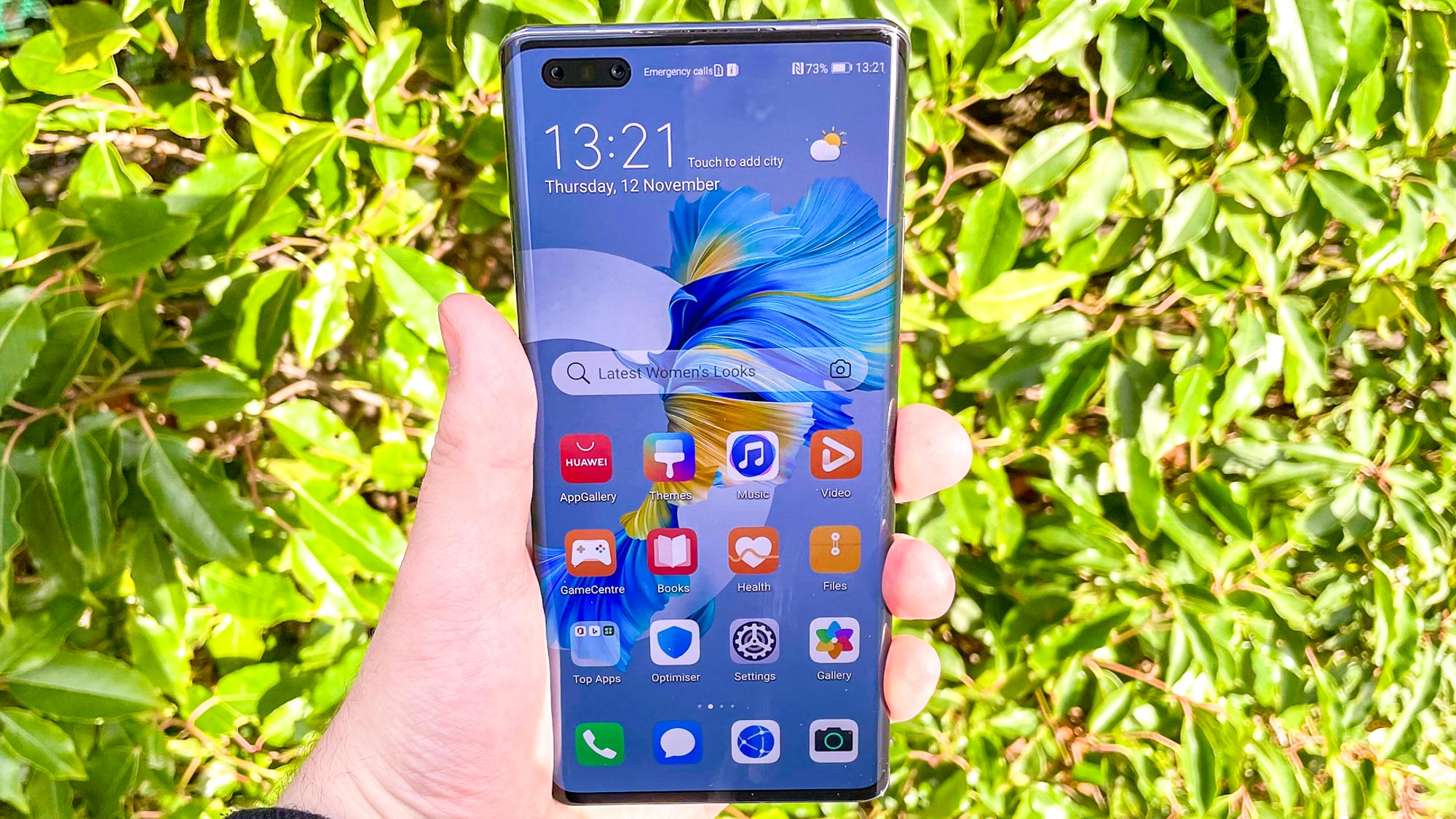
During my time using the phone for various everyday tasks, I didn't mind the slightly lower refresh rate, instead appreciating the size and brightness of the display. Provided you have a pocket or bag big enough, you'll enjoy taking in web pages, social media feeds or streaming content on this screen, which even outdoors in bright sunlight won't let you down.
Swapping to some music, I tried listening to bluegrass classic "If it Hadn't Been For Love" by The Steeldrivers, and was really pleased with Huawei's decision to ditch the anaemic sub-display speaker found on earlier phones. Now a standard speaker fires out of the phone's top edge, leaving the display unblemished and providing a well balanced sound. The speaker skews heavily toward vocals and treble, though, which is why I still prefer the more all-round sound of the iPhone 12 Pro.
Huawei Mate 40 Pro review: Cameras
Here's where we get to see exactly what the Leica-tuned cameras on the Huawei Mate 40 Pro are capable of. The rear cameras feature a 50MP main camera using Huawei's unique RYYB sensor for increased light sensitivity, a 20MP ultrawide camera that doubles as the phone's main video camera, and a 12MP telephoto with 5x optical zoom and a maximum of 50x digital zoom. There's also a laser depth sensor to help with special effects and AR apps when needed.
Grabbing an iPhone 12 Pro as a comparison, I took the Mate 40 Pro for a tour of Paddington's canals. Our first shot, overlooking Rembrandt Gardens, shows a typical Huawei trait — cooler color temperatures. The autumn leaves and lawns of this small public park look more attractive from the iPhone's perspective, but it left the open sky areas overexposed. The Mate 40 managed to excellently show off the late afternoon sky.
An ultrawide shot of the canal is a little tricky to compare since the Huawei and iPhone have different fields of view for their lenses. You can fit much more into a shot with the 0.5x iPhone camera, but the Mate 40 Pro's 0.6x camera captures the colors in a much more interesting way.
I did two telephoto camera comparisons of this statue, since the Huawei has a 5x optical zoom, while the iPhone’s optical zoom tops out at 2x optical. At 5x, the Huawei is superior as you'd expect. Its image is at an ideal level of saturation, while the iPhone's image is duller, and also has significant noise in the back of the shot.
But 2x, the competition is much closer than I predicted. The unpleasant fuzziness from the iPhone's image has gone, but the Mate 40 retains its more attractive coloring. I was expecting this two-part round to be a draw, each side winning when using only optical zoom. But I feel like due to its versatility, this round belongs to the Huawei.
My final test with the two phones' rear cameras was this nighttime shot of a pub. The iPhone's shot has warmer colors, but the Huawei was better able to keep the flares of light small, which leads to a more accurate representation of the scene's colors as I saw them.
Finally, I tried out the portrait selfie mode, another category I'd expect the Mate 40 Pro to do well in thanks to its combination of a 13MP camera and a 3D depth sensor, similar to the iPhone 12 Pro's TrueDepth 12MP front camera.
These two images could both easily be my preference depending on the day or which way the wind was blowing. The iPhone's shot looks more artistic with a better blur effect and a more flattering coloring for my hair, skin and jacket. On the other hand, the Mate 40s more honest representation of me and my surroundings has its own appeal. Both phones did a great job at cutting me out from the background though, so I have no complaints from a technical standpoint.
It's taken Huawei a few attempts, but whatever software tweaks it's figured out over the past few months have really helped it take better shots under normal lighting conditions, as well as the bright and dark settings where its phones have traditionally done well. The Mate 40 Pro’s impressive hardware can go blow-for-blow with Apple's latest iPhone without a problem, and I find it difficult to pick between the two phones' photos most of the time. I am keen to try the Mate 40 Pro against some other strong photography phones like the Pixel 5 or the Galaxy Note 20 Ultra, and see if it truly has what it takes to be one of the best camera phones around.
Huawei Mate 40 Pro review: Performance
The Mate 40 takes a different approach to its internal components than the majority of its Android rivals. Instead of going for the standard duo of a Snapdragon 865 and either 8GB or 12GB RAM, Huawei has used its own Kirin 9000 chipset; and you’ll find only 8GB of memory.
Fortunately, through Huawei's Phone Clone, AppGallery and Petal Search apps, you're able to get the apps you want from copying them from your old phone, downloading APK files from trusted sources or by using an alternative app store. It's not quite as straightforward as just searching on the Play Store and hitting download, but if you're comfortable living without the Google app ecosystem, you can basically get any Android app you like on the Mate 40 with a bit more effort.
You've also got the option to open and use up to three apps at once with the Multi-Window feature, and an "Eyes-On Display" that reduces notification volume and keeps the device awake when the phone detects you're looking at it. Plus there's a bunch of visual upgrades that make menus smarter and transitions between them smoother. You’ll also find upgrades to Huawei's Celia digital assistant, and the return of Private View, which makes sure your notifications stay hidden if someone who isn't you picks up the phone.
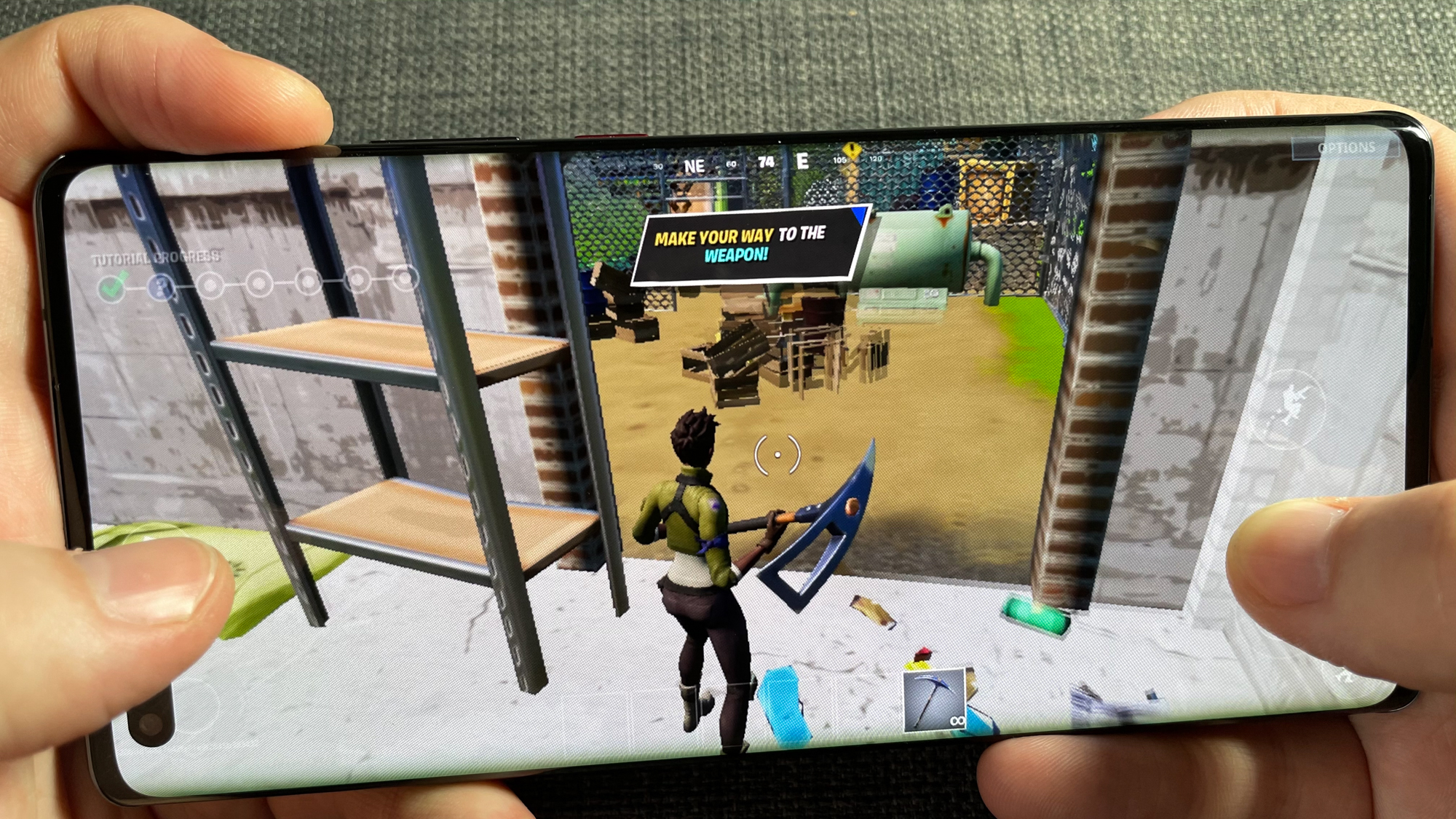
Currently, we are unable to get Geekbench 5, which measures overall performance, working on the Mate 40 Pro. However, we were able to run GFX Bench's Wild Life graphics benchmark, to give us an idea of how well the Huawei performs when it needs to render detailed graphics. Its average score was 6,116 frames, with a frame rate of 36.6 FPS. That puts it a little bit behind the iPhone 12 Pro Max’s 41 FPS result, but way ahead of the Galaxy Note 20 Ultra and its 26 FPS performance.
That's a pretty impressive result, enough to make the Mate 40 the most powerful Android device we've tested, even if it can't beat Apple's A14 chip in the iPhone 12 series. Do keep in mind that the Kirin 9000 is a generation ahead of the Snapdragon 865 we see in many Android flagships from this year, with Huawei's chip using a 5-nanometer process instead of 7 nm for the Snapdragon chipset. (The smaller process means more transistors and more power, to put it simply.) We'll have to see if the Mate 40 Pro can keep its lead when we start to see the expected Snapdragon 875 system-on-chip find its way into phones at the start of next year.
Huawei Mate 40 Pro review: Software
The Huawei Mate 40 Pro features Huawei’s own EMUI 11 interface, with the open-source version of Android 11 running beneath it. Unfortunately, the Mate 40 Pro can’t use Google apps at all due to U.S. government restrictions barring companies from doing business with Huawei. The phone also can't access the Google Play Store to download other Android apps.
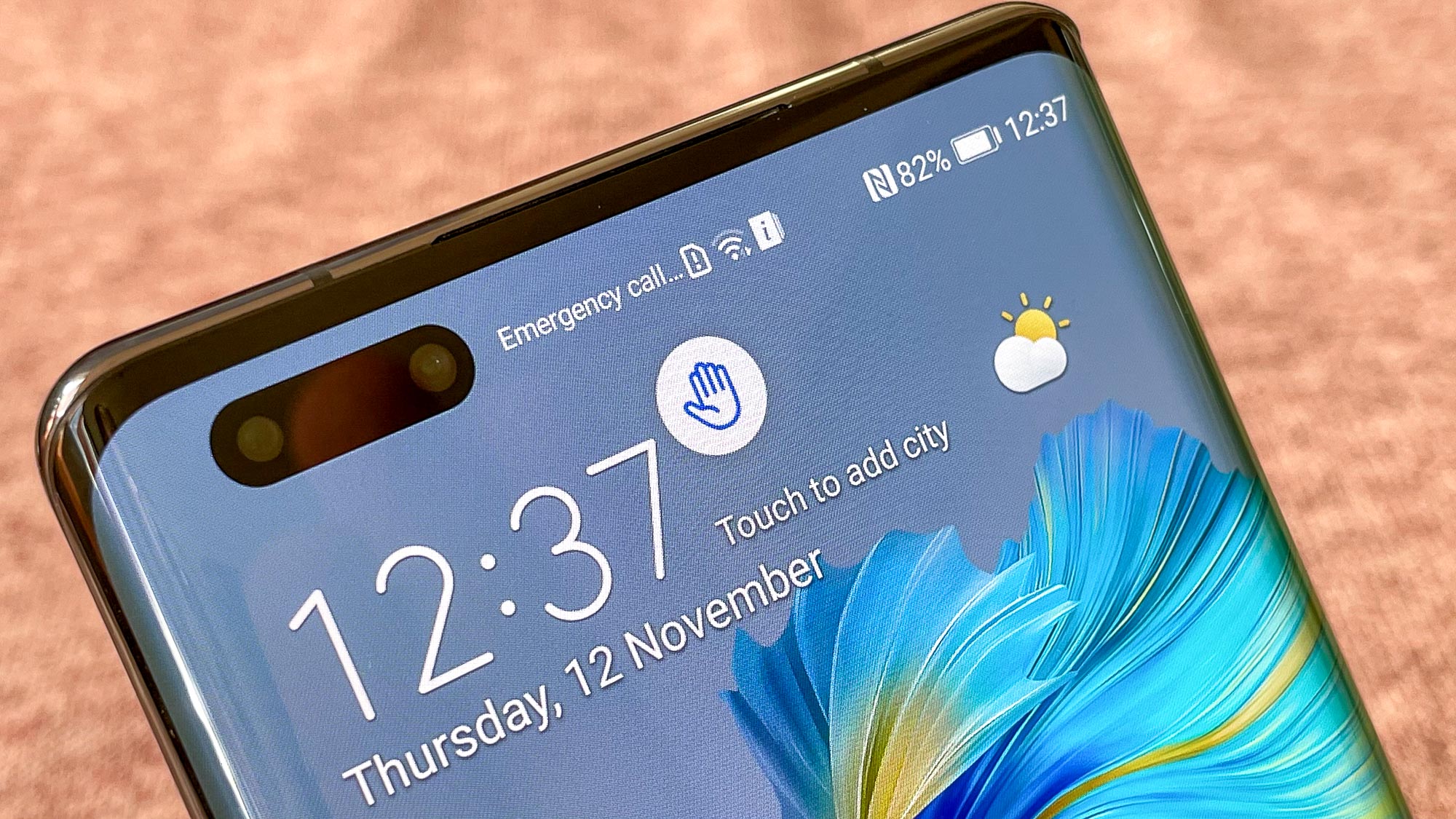
If you own a larger Huawei device like a MateBook X Pro or a MatePad Pro, then you can make use of Huawei's robust Multi-screen Collaboration tools, letting you operate your phone from a PC or tablet. New for the Mate 40 range's launch is the ability to have multiple apps from your phone open in different windows on a MateBook laptop — a feature that looks supremely useful if you already own one device and like to use your phone a lot for work.
On the negative side, you do get an awful lot of pre-installed apps, plus some recommendation folders which contain a rotating array of other suggested apps for you to download. Tidying up the Mate 40 Pro's home screens will take some doing, particularly since without an app library, you can't remove an app without straight-up deleting it.
Also, one thing that annoyed me particularly is that EMUI 11 doesn't have a dark mode scheduling function unlike basically all other operating systems. You can switch it on fairly easily yourself from the Quick Settings menu in the notification shade, but the fact it doesn't offer an automatic option seems like a big oversight, particularly since there have been complaints about this missing feature since EMUI 10 last year.
Huawei Mate 40 Pro review: Air Gestures and Face Recognition
Beyond the apps, EMUI 11 hides some unique enhancements compared to other Android skins. For example, Huawei has continued its air gestures system, which debuted on the Mate 30. This time around, there are more gestures you can use, allowing you to wake the phone up; swipe screens up, down, left or right; and use a pressing gesture to answer phonecalls or play/pause media. All this is powered by the same sensor that also enables Face Recognition, which you can use to secure the phone alongside the Mate 40’s under-display fingerprint sensor.
Once you learn the ideal distance to perform the gestures from, they’re surprisingly reliable and easy to pull off. It's great if you're the kind of person who keeps their phone upright on a stand when not in use, or in certain situations like cooking when you want to access the phone but don't want to touch it with dirty hands. However the left and right navigation gestures are limited to certain apps, which may prove irritating depending on what you're doing.
I found face recognition to be reliable enough on the Mate 40, allowing me to not really use my thumbprint to unlock the Mate 40. No other Android maker offers properly secure facial recognition like this, after Google dropped Motion Sense from the Pixel 5. That means that the only rival left for Huawei in this area is Apple's Face ID. Face unlocking is equally fast on either phone, but the iPhone still unlocks at angles where the Mate 40 Pro can't detect you.
Huawei Mate 40 Pro review: 5G
Thanks to the Kirin 9000 chip, the Mate 40 Pro has 5G built in. However, it's got sub6GHz compatibility only, since the Chinese market only has access to this flavor of 5G. Given that mmWave is primarily used in the U.S., where the Mate 40 isn’t available, that’s not much of a limitation.
Huawei Mate 40 Pro review: Battery and charging
At 4,400 mAh, the Mate 40 Pro actually has a slightly smaller battery than the 4,500 mAh power pack in the Mate 30 Pro. However raw capacity doesn't tell the full story, and the Mate 40 Pro remains a long-lasting phone.
Even after performing tests, watching videos and downloading several apps over Wi-Fi over the course of an eight-hour evening's chill-out session, the Mate 40 still had two thirds of its capacity left. We've yet to perform a formal battery rundown test on the phone, but once we do we'll update this review with the results and how it compares to the competition.
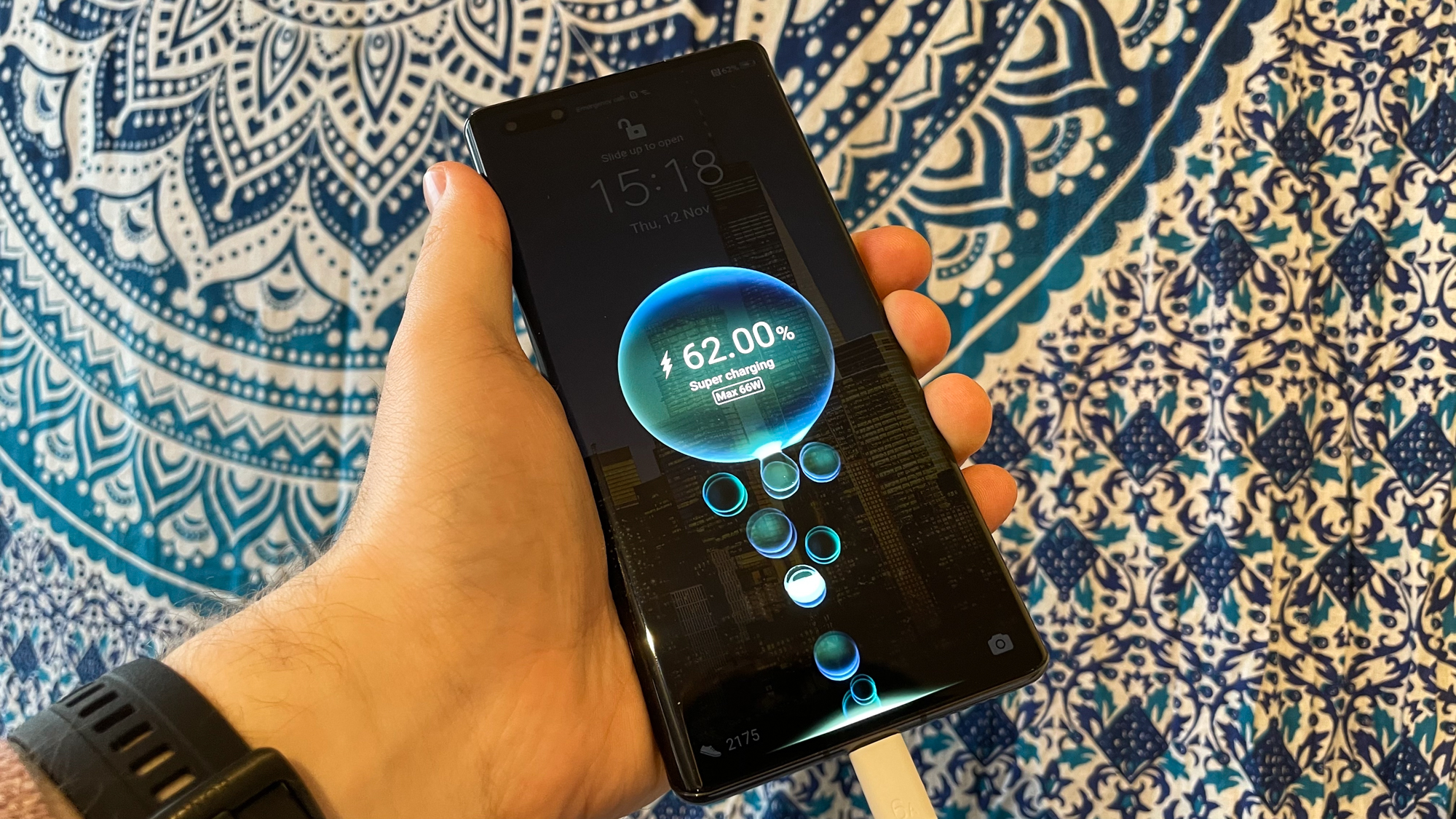
Huawei has just managed to leapfrog the competition with the included 66W wired charger, beating the OnePlus 8T's 65W charger by one whole watt. The Mate 40 Pro can also wirelessly charge at up to 50W, the fastest we've seen on a phone so far, although without one of Huawei's proprietary chargers we were unable to try that out.
After 30 minutes of charging, a drained Mate 40 Pro made it to 84% the phone was completely filled by the 44-minute mark. The OnePlus 8T manages 93% full in 30 minutes, likely due to the dual battery system that allows it to charge two cells at a lower speed, rather than a single cell at a higher speed like the Huawei does.
Even if it isn't quite as fast as the best charging phone around, being able to charge this quickly is still enough to satisfy most users' needs. And at this speed, the Huawei still trashes the 25W standard charger that the Samsung Galaxy S20 and Galaxy Note 20 series come with. Meanwhile, Apple's newest 20W charger has to be bought separately for the iPhone 12 series.
Huawei Mate 40 Pro review: Verdict
After extensive testing for this Huawei Mate 40 Pro review, there’s no doubt about the phone’s strongest features — the cameras, the performance, even parts of the software user experience. However if you asked me would I recommend the Mate 40 Pro, I'd regretfully say no.
The Mate 40 is an awesome big phone, but why pick this over an S20 Ultra, or a Note 20 Ultra, or a OnePlus 8 Pro? Samsung's phones also have excellent cameras, while OnePlus devices use an excellent version of Android that still has Google apps. Both of these brands' flagship phones offer similar performance for less money than you'd pay for the Huawei too.
It's taking Huawei some concerted effort, but the phone maker has shown that it can still play in a highly competitive phones market even with a significant Google-shaped chink in its armor. If the U.S. government's trade ban lifts any time soon (and with a new administration on the way, it might), we'll have to reevaluate things. For now though, the Mate 40 Pro is a phone you should only buy after some careful consideration of the price, literal and figurative, you're paying for the phone's outstanding features.

Richard is based in London, covering news, reviews and how-tos for phones, tablets, gaming, and whatever else people need advice on. Following on from his MA in Magazine Journalism at the University of Sheffield, he's also written for WIRED U.K., The Register and Creative Bloq. When not at work, he's likely thinking about how to brew the perfect cup of specialty coffee.
